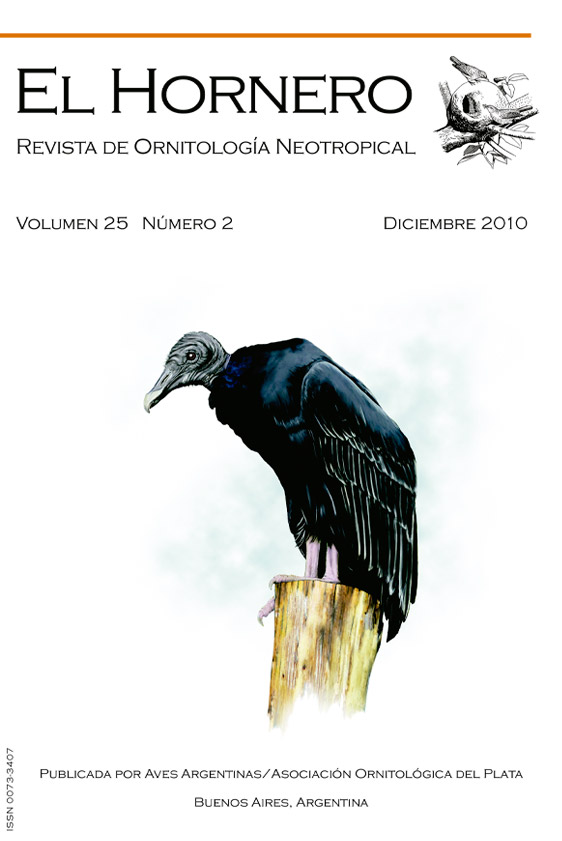Abstract
We studied the breeding biology of the American Oystercatcher (Haematopus palliatus) during four breeding seasons (1997–2001) at Mar Chiquita Coastal Lagoon Reserve, Mar de Cobo and La Caleta (southeastern Buenos Aires Province, Argentina). Nests were laid in habitats with low vegetation cover and high stone density, close to the dunes. The initial egg laying period (September–October) lasted 27 days. Two replacement clutches were recorded. Hatchings were recorded from October until December. There were no differences between the sizes of first and second clutches. We recorded a negative correlation between clutch size and laying date. Breeding success was low, with a hatching success of 25.85% and 0.24 fledging per pair per year. There was a negative relationship between breeding success and laying date. Egg losses were due to severe storms, predation and human disturbances. Clutch size and egg volume were lower than those reported for the subspecies Haematopus palliatus palliatus from North America, whereas breeding success was similar. Due to the low breeding success recorded and the effects of human disturbances we propose to restrict the use of beaches by people during the breeding season.
References
BACHMANN S Y MARTÍNEZ MM (1999) Feeding tacticsof American Oystercatcher (Haematopus palliatus),on Mar Chiquita Coastal Lagoon, Argentina.Ornitología Neotropical 10:81–84
CANEVARI M, CANEVARI P, CARRIZO GR, HARRIS G,RODRÍGUEZ MATA J Y STRANEK RJ (1991) Nueva guía delas aves argentinas. Tomo 1. Fundación Acindar,Buenos Aires
DALEO P, ESCAPA M, ISACCH JP, IRIBARNE O Y RIBEIRO P(2005) Trophic facilitation by the oystercatcherHaematopus palliatus Temminick on the scavengersnail Buccinanops globulosum Kiener in a Patagonianbay. Journal of Experimental Marine Biology and Ecol-ogy 325:27–34
DAVIS MB, SIMONS TR, GROOM MJ, WEAVER JL Y JEFF R(2001) The breeding status of the American Oyster-catcher on the east coast of North America andbreeding success in North Carolina. Waterbirds24:195–202
FASANO JL, HERNÁNDEZ MA, ISLA FI Y SCHNACK J (1982)Aspectos evolutivos y ambientales de la laguna MarChiquita (Provincia de Buenos Aires, Argentina).Oceanologica Acta Número especial:285–292

This work is licensed under a Creative Commons Attribution-NonCommercial 4.0 International License.





